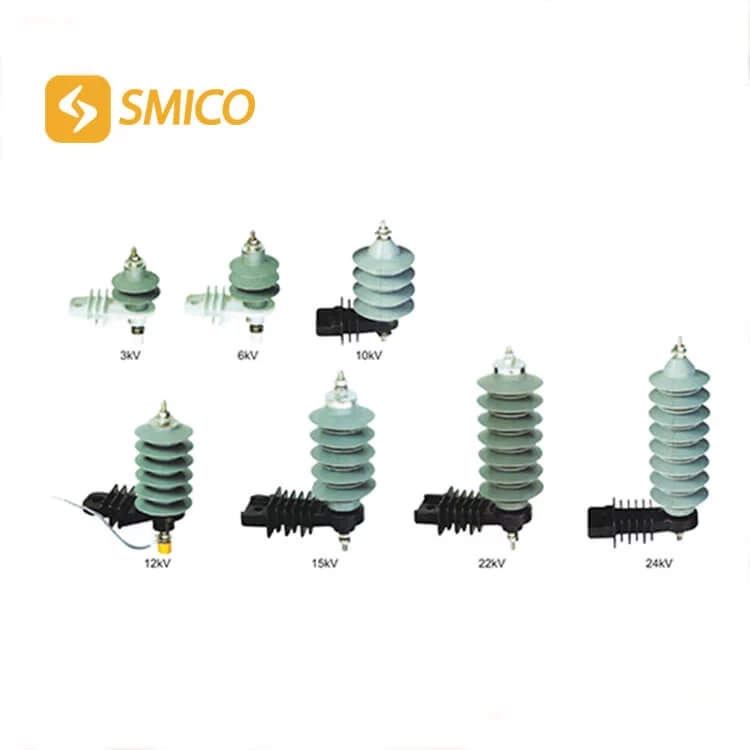A Must-have During Thunderstorm Season, A Guide On How To Choose An Efficient Lightning Arrester!
Thunderstorm season is frequent, and power systems, communication equipment and household appliances are vulnerable to lightning surges and overvoltage, causing equipment failure or damage. Choosing an efficient lighting arrester 33kv is the key to ensuring safety and stable operation of equipment. The following provides you with a comprehensive lightning arrester 20 kv purchase guide:
1. Why choose lightning arrester 22kv?
1. Hazards of lightning surges
The instantaneous high-voltage current generated by lightning strikes invades the equipment through the power grid and signal lines, causing circuit boards to burn, data to be lost or equipment to be scrapped.
Induced overvoltage can also cause unstable power supply and affect the service life of the equipment.
2. The role of lightning arrester 24kv
Absorb and discharge instantaneous surge currents to limit the impact of overvoltage on equipment.
Provide multi-level protection to ensure stable operation of power supply systems and equipment during thunderstorm seasons.
2. The main types of lightning arrester 24kv 10ka
According to the application scenarios and protection requirements, surge arresters can be divided into the following categories:
1. Power supply lightning arrester
Single-phase/three-phase power supply lightning arrester: used for home and industrial power distribution system protection.
DC lightning arrester: suitable for DC power protection such as photovoltaic power generation and energy storage systems.
2. Signal lightning arrester
Network signal lightning arrester: protects RJ45 network devices such as surveillance cameras and switches.
RS485/4~20mA signal lightning arrester: suitable for industrial control signals and automation systems.
Antenna feeder lightning arrester: protects wireless antenna systems such as base stations and satellite communication equipment.
3. Combined lightning arrester (two-in-one, three-in-one lightning arrester, etc.)
Provides power and signal line protection at the same time, suitable for places with limited space.
3. Key parameters for selecting efficient surge arresters
1. Current capacity (Imax)
The current capacity indicates the maximum surge current that the lightning arrester can withstand, in kA.
Recommended value:
Home use: 10kA~20kA
Industrial grade: 40kA~100kA
High lightning area: ≥100kA
2. Residual voltage level (Up)
Residual voltage is the residual voltage that the equipment is subjected to after the surge passes through the lightning arrester.
Principle: The lower the residual voltage, the better the protection effect on the equipment.
Recommended value: Up ≤ 1.5kV
3. Response time (tA)
Indicates the time required for the lightning arrester to start protection, in nanoseconds (ns).
Requirement: The faster the response speed, the less impact the equipment is subjected to surges.
Recommended value: tA ≤ 25ns
4. Protection level
Class B (first-level lightning protection): Applicable to the front end of the distribution system, withstanding high-energy surges.
Class C (secondary lightning protection): Applicable to distribution boxes, providing more sophisticated protection.
Class D (third-level lightning protection): Applicable to terminal equipment such as home appliances and computers.
Surge arrester
IV. How to choose surge arrester according to application scenarios?
1. Home and office
Use single-phase power surge arrester and install it at the main power supply of the distribution box.
Install three-level lightning protection sockets or network lightning arresters for routers, computers, TVs and other equipment.
2. Industrial automation system
Install three-phase power surge arrester at the front end of the distribution system.
Install RS485/4~20mA signal lightning arrester on control signal and communication lines.
3. Security monitoring system
Use POE network lightning arrester to protect network cameras and switches.
Install antenna feed line lightning arrester at the antenna end to prevent lightning strikes from damaging wireless devices.
4. Photovoltaic power generation and new energy systems
Use DC surge protector to protect DC voltage within 1500V.
V. Procurement and maintenance precautions
1. Choose regular channels
Purchase through factory direct supply or authorized dealers to avoid inferior products.
Give priority to brands that provide after-sales service and technical support.
2. Regular maintenance
Regularly check the status indicator light or remote monitoring data of the surge arrester to ensure that the equipment has not failed.
After the thunderstorm season, the lightning arrester should be functionally tested or replaced.
3. Professional installation
Choose a technician with lightning protection installation qualifications to ensure correct installation and grounding system compliance.
Equipment safety cannot be ignored during the thunderstorm season. Choosing an efficient and reliable surge arrester is the key to ensuring power and equipment safety.

